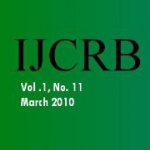Isfahan Textile Industries and the Soviet-dependent Labor Movement

Since the era of the Qajars, Isfahan had had the potential to develop textile industries. Finally, the first textile factory was set up in this city in 1925. Later, more textile factories were built so that by the end of 1941, 9 big textile factories were already active in the city. The events following the August of 1941, arrival of the Allied in ...

Since the era of the Qajars, Isfahan had had the potential to develop textile industries. Finally, the first textile factory was set up in this city in 1925. Later, more textile factories were built so that by the end of 1941, 9 big textile factories were already active in the city. The events following the August of 1941, arrival of the Allied in Iran and the deposition of Reza Shah Pahlavi created an open political atmosphere which led to the emergence of Isfahan’s Labor Movement. However, the Tudeh Party unhesitatingly took advantage of the situation and took control of the movement. This party forced its followers to pursue their cases in a violent manner and even oust their political and same-guild competitors. These conflicts eventually resulted in increased economic recession and unemployment. In 1946, by enacting the new Labor Law and establishing the Ministry of Labor, the government tried to play the Tudeh Party’s role of mediation between the labor and the employer itself. The hypothesis of this article is based on the fact that the presence of the Tudeh Party gave Isfahan Labor Movement a violent character and eventually both the workers and the employers suffered damage. This article uses library study method and is based on the documents and newspapers of the period.
Keywords: Isfahan, labor movement, Tudeh Party.
Keywords: Isfahan, labor movement, Tudeh Party.
+
یکشنبه ۳۱ فروردین ۱۳۹۳ ساعت ۲۱:۱۸
نظر شما


